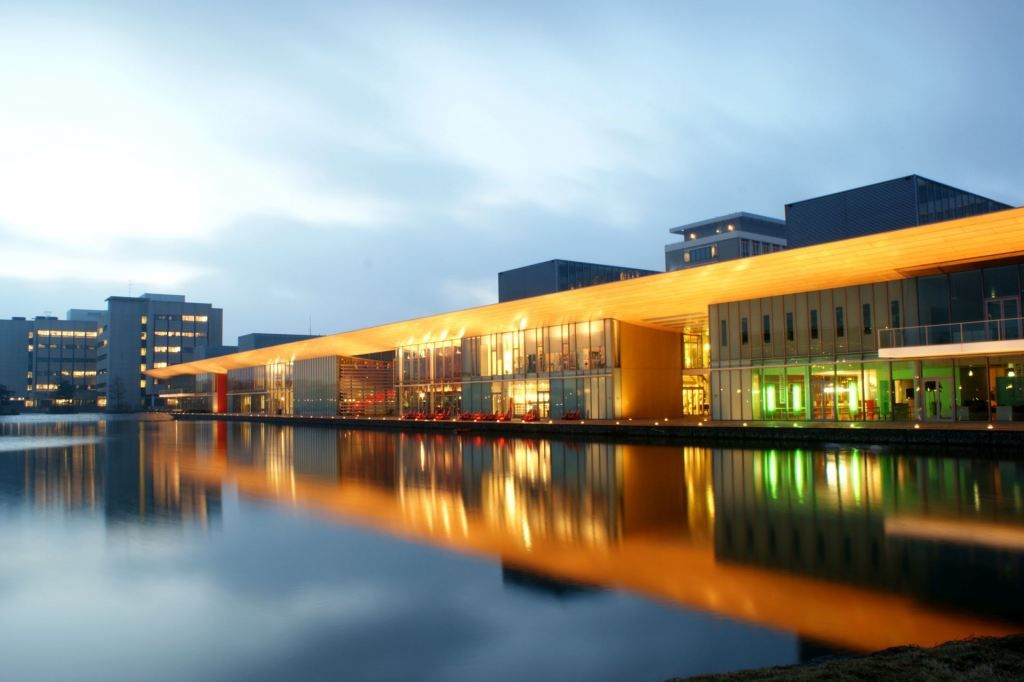
This is Part 1 of the series Campuses in North Brabant. In the next weeks, we will publish the profiles of all 8 innovation campuses that were mentioned in the recent study by Buck Consultants International (BCI). Every Tuesday we highlight one of them. Today we focus on High Tech Campus Eindhoven. Here are all the articles that have already been published.
High Tech Campus Eindhoven (HTCE) is a renowned high-tech power in research and development, vibrant ecosystem of open innovation and cooperation, and booming network of high-tech ventures and multinational talent and these combined make it “the smartest square kilometre in Europe”.
Research and development power in its DNA
The Campus’ high-tech power in research and development is in its DNA. What was Philips NatLab for R&D activities in the late 1990s and the birthplace of world-class companies such as ASML and NXP, is now the famous “smartest square kilometre in Europe” with 11,500 researchers, developers, and entrepreneurs from over 85 nations who work at 165 global brands, leading research institutes, fast-growing enterprises, and high-tech ventures.
HTCE is one of Europe’s leading centres of research activities in high-tech systems, nanotechnology, smart pharma, life sciences, embedded systems, encryption, and security. The Campus facilitates R&D and product development by sustaining an innovation community of thousands of skilled researchers and entrepreneurs who network and share knowledge on a daily basis.
Open innovation and cooperation
“I have visited the campus numerous times, and can attest to the energy, vitality and diversity of the more than 10,000 scientists and engineers located there. HTCE is an example of open innovation, with wonderful physical layout, many different companies and technologies housed there, and savvy to help newcomers plug into this vibrant open innovation ecosystem,” Henry Chesbrough, adjunct professor and faculty director of the Garwood Center for Corporate Innovation at the Haas School of Business at the University of California, said about HTCE several years ago.
One major distinctive feature of HTCE is its fostering cooperation. The Campus houses a staggering number of small and medium-sized companies, prominent multinationals, among which ASML, IBM, Shimano, and Intel, and world-class research institutes, such as Solliance and EIT Digital. The physical distance between the numerous buildings and offices is minimal, thus people from different companies can easily exchange ideas and cooperate. This might also be a reason that justifies what some of the residents call “relatively high rents” at the Campus.
As HTCE’s founder and current important tenant, Philips has its largest innovation hub located at the Campus. Experts from 82 nationalities work at the three Philips buildings – Philips Research, Philips Design, and Signify (former Philips Lighting), and develop meaningful innovations for improving people’s lives in the areas of Healthcare, Consumer Lifestyle, and Lighting. Hans de Jong, President Philips Netherlands, has previously highlighted how important HTCE is for Philips: “High Tech Campus has become an extremely important breeding ground for new ideas. For us, it is the ideal place to accelerate the development of new digital technologies and products in collaboration with others.”
High-tech ventures and entrepreneurship
New startup companies is another crucial factor for open innovation. HTCE has a long list of progressive high-tech startups whose growth it has facilitated. But this should not come as a surprise since the Campus has been considered as one of the best locations for high-tech venture development by the Financial Times, Fortune, and Forbes.
Among one of the success stories at the Campus is LifeSense Group, technology development company that creates wearables for healthcare applications, one of which is Carin – the product that helps women combat urine loss. The company spun off from Holst Centre, an R&D centre that develops technologies for wireless autonomous sensor technologies and flexible electronics whose goal is to “contribute to answering global societal challenges in healthcare, lifestyle, sustainability and the Internet of Things”.
In previous interviews, Valer Pop, CEO of LifeSense Group, has described HTCE as the number one location in the world for him and his company: “Having the HTCE on my business card greatly helps in closing deals in the US, Japan or anywhere elsewhere in the world. It’s like an endorsement: people simply trust me when I say that LifeSense is based at this campus, that has a global reputation ever since Philips created many of its successful products here.”
Another prominent startup company at HTCE is Bambi Medical, medtech start-up company developing a non-intrusive wireless monitoring for pre-term infants. The company is a former participant of HighTechXL, Europe’s business accelerator for high-tech hardware startups whose goal is to bring high-tech hardware companies to the next level. Earlier this year Bambi Medical raised €4 million from private investors: “This type of funding by private investors is pretty unique for the Netherlands. Normally a round of this size would be raised with venture capitalists and regional development companies,” said Sidarto Bambang Oetomo, founder, and CMO.
All in all, High Tech Campus Eindhoven is a hub of high-tech power, open innovation, and cooperation and a network of multinational scientists and entrepreneurs who connect on a daily basis and together create the technologies of tomorrow.
In Part 2, we will introduce you to TU/e Campus.
Featured image: hightechcampus.com
